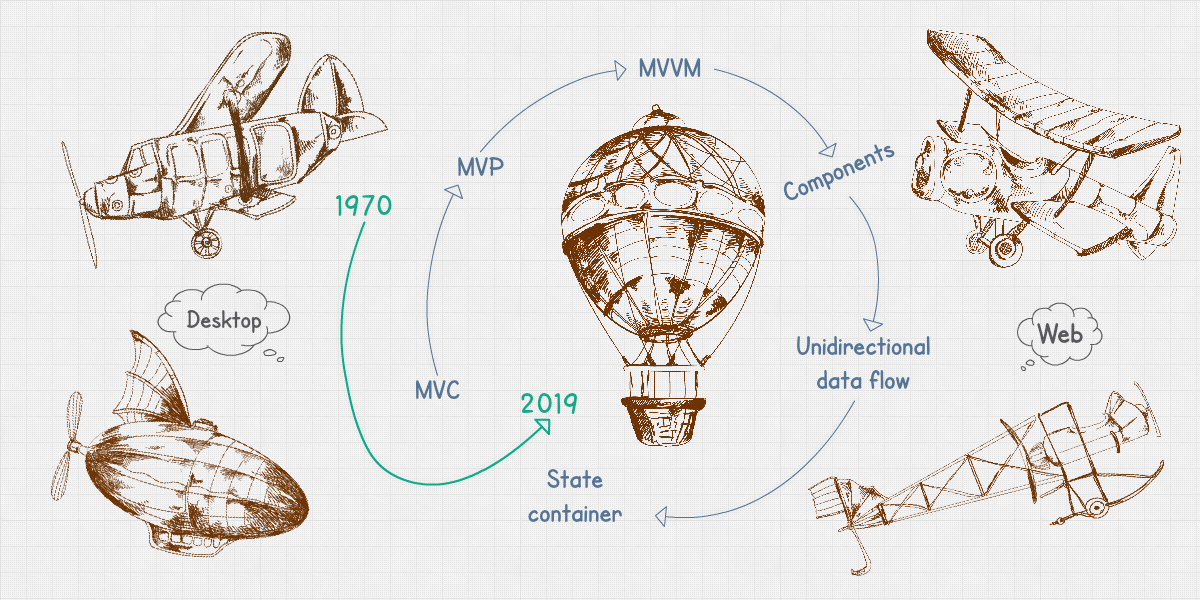The Evolution of Contemporary Front-End Architectures
Contemporary Front-end Architectures 🔗

Contemporary front-end architectures have evolved significantly from the early days of simple static websites to complex, interactive web applications. This evolution, driven by changes in user expectations and technology, has led to the development of various architectural patterns, including MVC, MVP, and MVVM, each addressing the challenges of data flow and component management. Contemporary approaches emphasize unidirectional data flow, component-based design, and declarative DOM management, allowing developers to create rich internet applications that are both efficient and user-friendly. The rise of frameworks like React, Angular, and Vue.js exemplifies this shift, with a focus on maintaining clean code structures and enhancing user experiences across diverse devices and platforms.
- Front-end architecture has transitioned from simple static sites to complex applications.
- Key design patterns include MVC, MVP, and MVVM, emphasizing data flow and component management.
- Modern frameworks prioritize unidirectional data flow and component-based architecture.
- User experience and performance are critical in contemporary web application design.
What are the main architectural patterns discussed in the text?
The text discusses MVC (Model-View-Controller), MVP (Model-View-Presenter), and MVVM (Model-View-ViewModel) as key architectural patterns used in front-end development.
How have contemporary front-end architectures changed user experience?
Contemporary front-end architectures focus on unidirectional data flow and component-based design, leading to richer, more interactive user experiences that are efficient and responsive across various devices.
What role do modern frameworks play in front-end architecture?
Modern frameworks like React, Angular, and Vue.js help implement contemporary architectural principles, emphasizing clean code structures and enhancing user experiences while managing complex data flows.